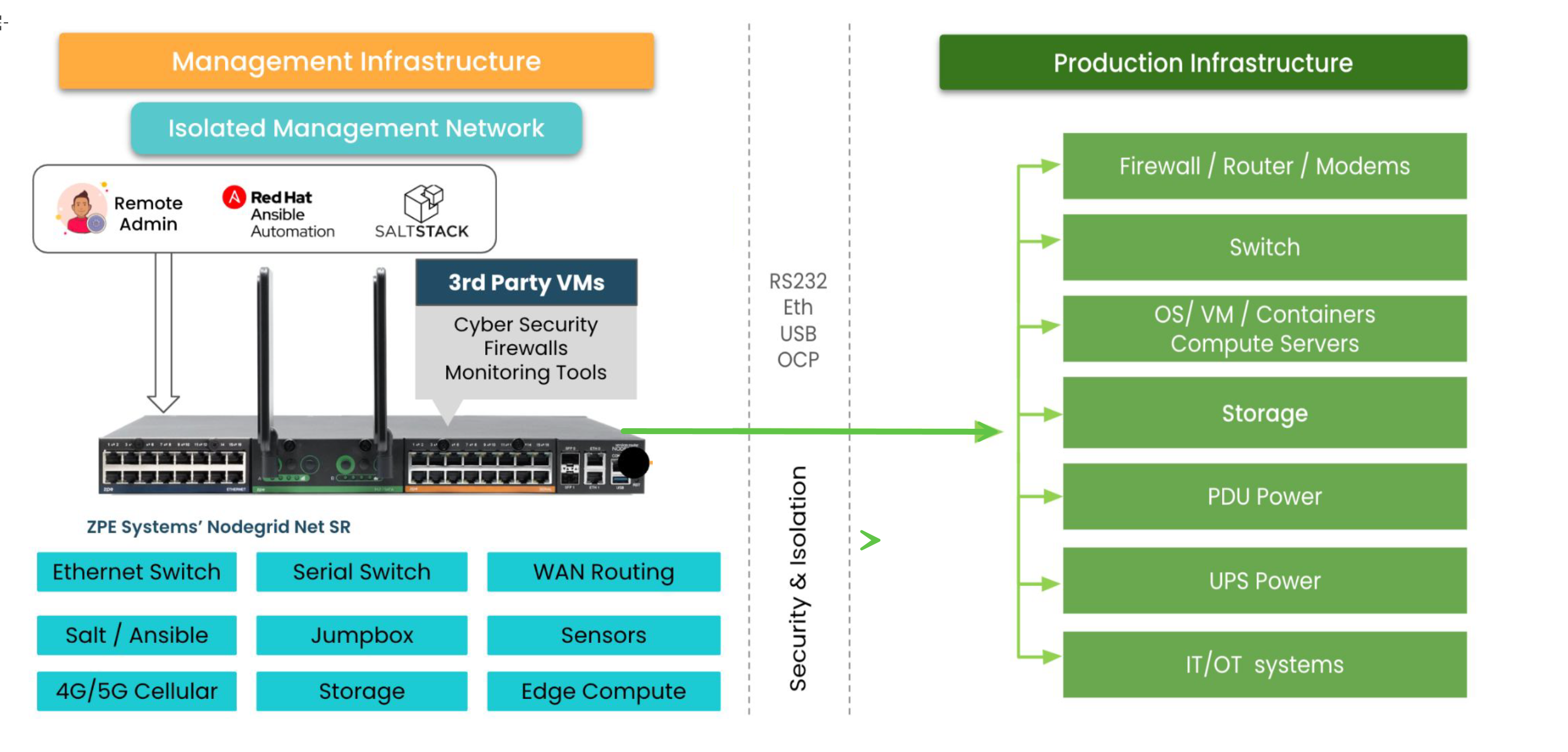Isolated Management Infrastructure (IMI) is a specialized framework designed to enhance the security and reliability of managing critical IT assets by segregating the management traffic from the primary business-critical network traffic. This isolation reduces the risk of operational disruptions and security breaches that could affect the core network functions.
IMI operates parallel to your production environment, providing a backdoor for device access in case of an outage.
Key Features of IMI
Security: IMI provides a secure environment by physically and logically separating the management network from the production network. This isolation helps in safeguarding sensitive operations from unauthorized access and potential cyber threats.
Resilience: By decoupling the management tasks from the main network operations, IMI ensures that critical management functions remain operational even if the main network is compromised or experiencing downtime.
Centralized Control: Despite the physical separation, IMI allows for centralized control over all managed devices and systems, offering a holistic view and streamlined management capabilities from a single interface.
Scalability: IMI is designed to be inherently scalable, accommodating the growth of network devices and systems without compromising on performance or security.
Compliance and Best Practices: Adhering to regulatory standards and best practices, IMI helps organizations meet stringent compliance requirements for network management and data protection.
The following image depicts a sample IMI architecture: